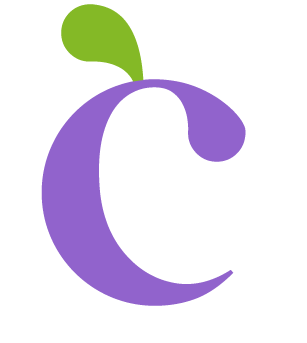HOW DOES CHITOSAN WORK?
THE EFFICACY OF CHITOSAN HAS BEEN PROVEN, BUT TO UNDERSTAND HOW THIS POLYSACCHARIDE WORKS IT IS NECESSARY TO DESCRIBE ITS SPECIFIC CHARACTERISTICS AND MECHANISM OF ACTION
Chitosan is a derivative of organic nature, which is obtained starting from the partial deacetylation of chitin (a polysaccharide composed of N-acetyl-D glucosamine units) in an alkaline environment. To date, the OIV (International Organisation of Vine and Wine) provides for the use of chitosan in oenology for wine processing, or to assist the action of fining agents in both wines and musts. However, only the use of chitosan of fungal origin, and specifically from Aspergillus niger, is allowed.
Research conducted in the laboratory on the potential of chitosan has constantly been evolving and showing surprising results; indeed, chitosan is an element which, in addition to having proven efficacy and versatility of use, also stands out because it is easily available and biodegradable.
USE AND ACTION OF CHITOSAN IN MUSTS AND WINES
Another important function of chitosan is the removal of metal cations from the solution, which, in turn, reduces the content of heavy metals such as iron, lead, cadmium and copper.
On the one hand, this type of action allows for the avoidance of copper and iron instabilities and on the other, it further destabilises the microbial wall by removing structural cations.
In addition, it reduces any unwanted compounds such as ochratoxin A, a fungal toxin that can be found following microbial alterations in grapes. But what makes chitosan the polysaccharide of choice in oenology is its ability to inhibit Brettanomyces, in fact, chitosan serves as an indispensable adjuvant and its use allows for incomparable results compared to other products.
THE ANTISEPTIC ACTION OF CHITOSAN BRETTANOMYCES
As discussed before, the most important and widespread use of chitosan in oenology relates to the inhibition of Brettanomyces, where no other adjuvant is able to perform so effectively.
Brettanomyces is a contaminating yeast, which is particularly resistant to high levels of ethanol and can catalyse the reduction of vinylphenols through the enzyme vinylphenol reductase. This type of biocatalytic activity is responsible for the onset of olfactory defects such as the scents of “stable”, “leather” and “horse sweat”.
We need to examine the structure of chitosan in order to explain how it acts against the onset of Brettanomyces.
Indeed, we know that chitosan is obtained from the partial deacetylation of chitin, during which the release of the primary amino groups occurs, which, in an acid environment, are protonated, thus yielding a positive charge.
This particular type of charged structure is functional to the disintegration of the membranes of bacteria and yeasts. In fact, one of the mechanisms by which chitosan acts results from the fact that the outside cell wall of the bacteria is negatively charged and, therefore, being positively charged, acts by complementary charge. On the other hand, yeasts do not have an obvious negative charge, but it is thought that they incorporate chitosan into their own wall during growth, thus leading to wall disintegration. An alternative mechanism of action can be traced back to the binding of chitosan to microbial DNA, which would effectively block DNA transcription and replication.
CHITOCEL, THE CHITOSAN-BASED AEB SOLUTION
Chitocel is a chitosan-based product, a natural polysaccharide of fungal origin (Aspergillus niger) which allows reducing, and, in some cases, eliminating, any unwanted microbial load in wine. It is active against acetic and lactic bacteria, yeasts in general and Brettanomyces.
The special and balanced formulation with yeast hulls allows Chitocel to exert a broad-spectrum antimicrobial action, thus contributing to aromatic and olfactory cleansing.
HOW DOES CHITOCEL WORK?
We explain how Chitocel works through a practical test carried out in the laboratory: we used a wine contaminated with Brettanomyces to evaluate the efficacy of Chitocel in a quantity of 5 g/hL. Even before completing a microbial count, we verified the activity of chitosan under the microscope on the contaminating yeast, and confirmed the destruction of cellular integrity.
Subsequently, in order to perform a plate count, we filtered a 50 mL aliquot of the solution on a membrane with a porosity of 0.2 µm, and then incubated it for 8 days at 30°C on a selective medium for Brettanomyces.
We observed an important difference before and after treatment with Chitocel: the first microbial count had such a high number of colonies that we could not quantify it. After treatment with Chitocel, we did not see any contaminating cells on the plate whatsoever.
A COMPLETE RANGE TO REDUCE SULFUR
Alongside Chitocel we have developed other chitosan-based products, which represent excellent alternatives to SO2:
- Chitocel Must, which is ideal for use in white winemaking, protects the wine from early alterations, and its co-formulation with tannic acid serves as an antioxidant by acting in a manner akin to sulfur dioxide;
- Chitocel Red, on the other hand, is particularly suitable for the production of red wines. It allows for the stabilising of colour and correcting any defects; in addition, it performs the same action as sulfur dioxide thanks to the combination of chitosan and proanthocyanidin.
Chitocel Must and Chitocel Red exert a clarifying action, contribute to the reduction of the content of heavy metals such as iron, lead, cadmium and copper, thus preventing iron and copper instabilities, and allow reducing any contaminants (such as ochratoxin), thanks to the synergy with yeast peels and tannins.
Therefore, both have antimicrobial properties and which can assist with limiting the use of sulfur dioxide, in line with growing market demands which, in recent years, have been calling for products with ever lower sulphite contents.
The range is completed with Antibrett 2.0, a product combining chitosan, yeast hulls and beta-glucanase enzymes, which is particularly suitable for its inhibitory action against yeasts belonging to the Brettanomyces genus.
In fact, thanks to its antimicrobial properties, it inhibits the production of vinyl reductase, which participates in the transformation of cinnamic acids naturally present in wines, into the corresponding ethyl derivatives, responsible for the odours attributable to Brettanomyces.
Antibrett 2.0 is indicated both to prevent alterations due to unwanted yeasts, and as a curative product: indeed, Brettanomyces has very long incubation times (3-8 months), during which there are no abnormal odours; therefore, its use may be required after any such odours are detected.


 CIDER
CIDER

 United Kingdom
United Kingdom



